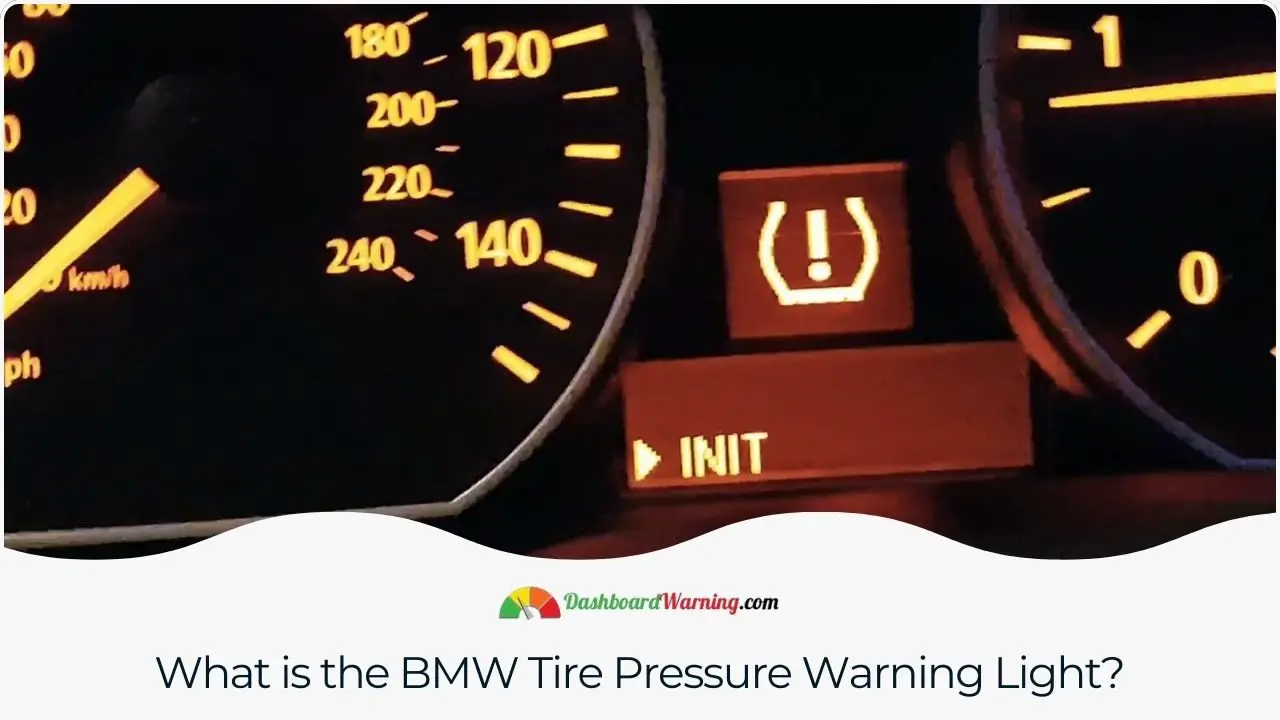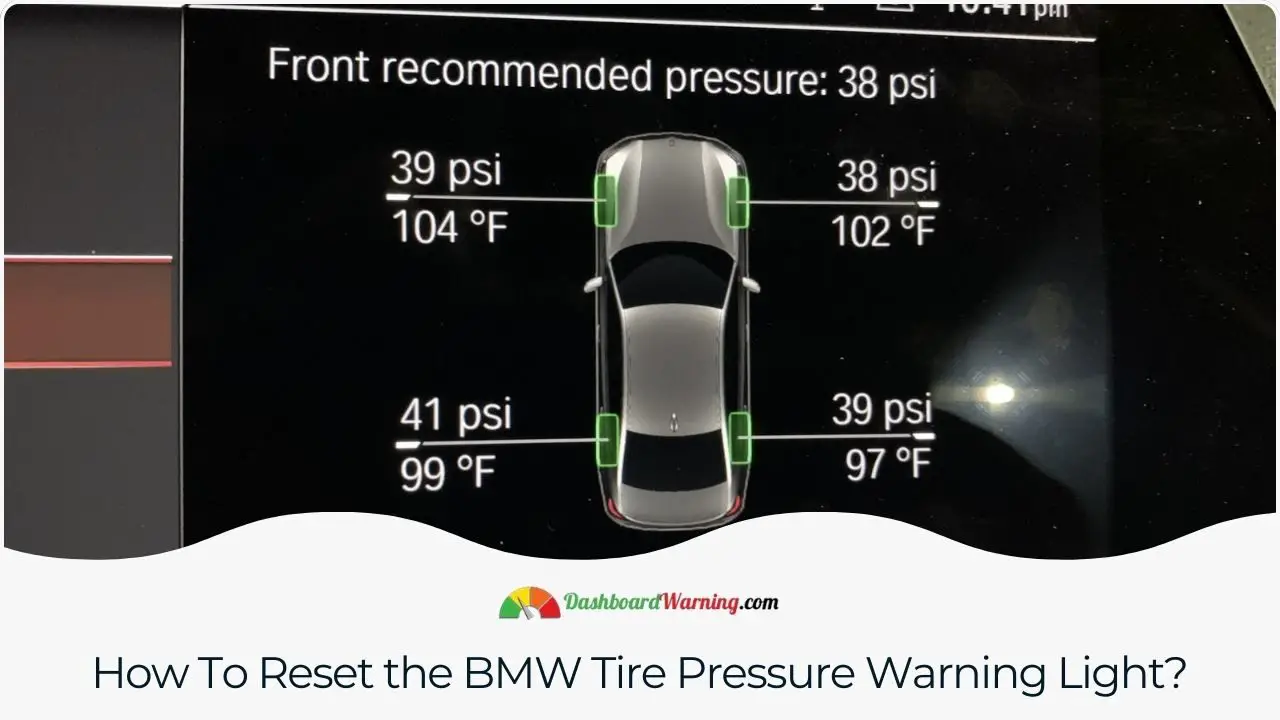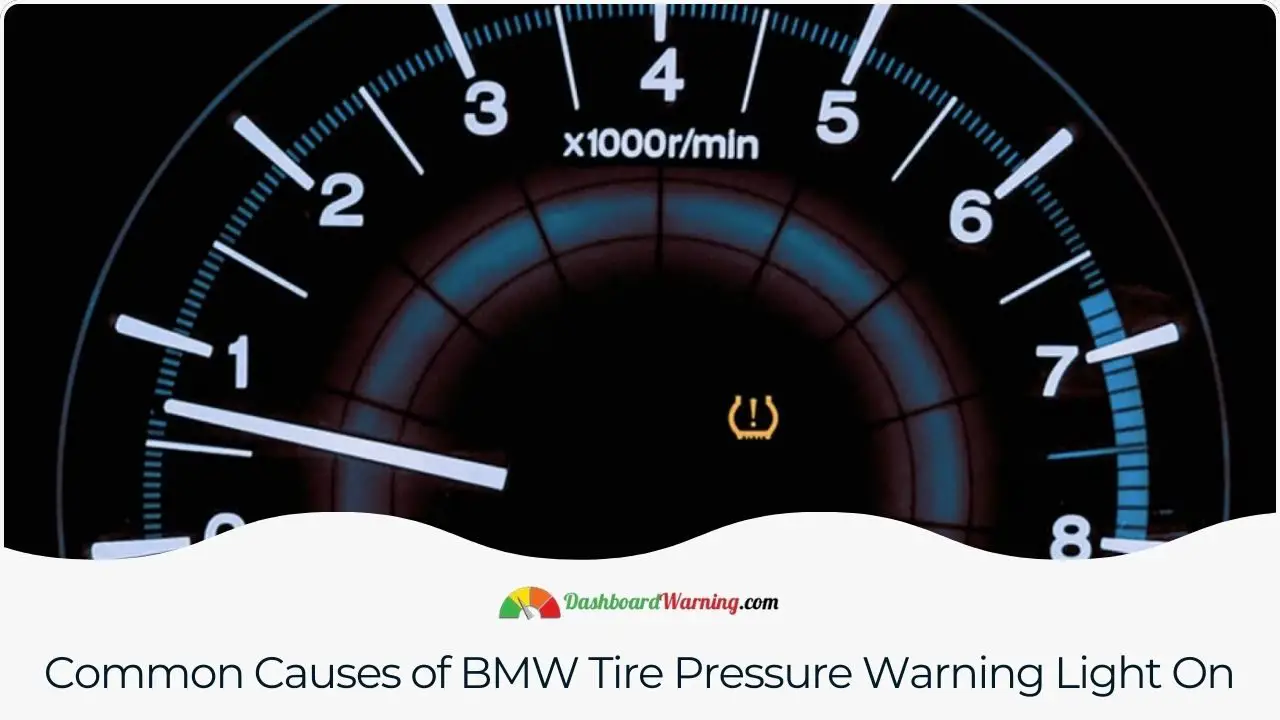Today's vehicles have advanced technology, including numerous sensors, to ensure optimal performance. One critical tool is the tire pressure sensor, which alerts drivers to potential issues. This sensor commonly activates due to under-inflated tires. It plays a vital role in preventing early wear and tear of the tire tread and possible tire failure. Temperature changes can also trigger the tire pressure light and impact tire pressure.
See also: BMW dashboard warning lights
What is the BMW Tire Pressure Warning Light?

The BMW is designed to notify you of low tire pressure immediately. Upon starting the car, a yellow warning light will appear on your dashboard, accompanied by an image indicating which tire needs attention. Using a basic air compressor, you can easily adjust the tire to the proper pressure and reset the Tire Pressure Monitor. Remember, tire pressure varies with the seasons, and driving on a low tire is risky, so maintaining correct tire pressure is essential.
How To Reset the BMW Tire Pressure Warning Light?

Modern vehicles are legally required to have a tire-pressure monitoring system (TPMS). This system alerts you through a dashboard light or message when tire pressure falls below a safe threshold, possibly due to tire damage, a puncture, or significant temperature changes. After addressing the issue, the TPMS light may stay on briefly or until the car is driven a short distance.
If it persists, a manual reset is necessary. Here's how to reset it in a BMW:
- Step 1: On the home screen, select the car icon on the iDrive Controller or touchscreen.
- Step 2: Choose Vehicle Status.
- Step 3: Select Tire Pressure Monitor.
- Step 4: Choose Perform Reset. Ensure the car and stationery are on.
- Step 5: Drive for a few minutes.
The display will show the reset is underway. After driving briefly, it should indicate "Reset successful," and the TPMS alert will disappear.
Common Causes of BMW Tire Pressure Warning Light On

The BMW 328i's tire pressure warning light most frequently activates due to a leaking tire, a wheel that cannot retain air, or a malfunctioning tire pressure monitoring system (TPMS).
TPMS Sensor Replacement
The tire pressure monitoring system's control module can detect a sensor failure, often indicated by a warning light. This usually occurs when the sensor loses communication. However, a TPMS sensor can also fail by giving incorrect tire pressure readings, potentially leading to unnoticed flat tires or false low/high-pressure alerts.
TPMS System Relearning Process
When the TPMS warning light turns on, a relearn process is initiated. This is often accompanied by a message about the system's operational issues or communication problems. Monitoring tire pressures becomes crucial when the TPMS malfunctions, as it can't reliably warn of under- or overinflation.
Wheel Replacement Indicators
Visible cracks on wheels, particularly after hitting a large bump, indicate the need for wheel replacement. Other signs include air loss from the affected tire, steering wheel vibration from tire imbalance, and unusual noises due to improper wheel nuts or bolts. These symptoms, while few, are critical and should not be overlooked.
TPMS Control Module Replacement
The TPMS control module might need to alert the driver about underinflated or overinflated tires, communicate with the body control module or TPMS sensors, or erroneously report incorrect tire pressures.
Diagnosing the Tire Pressure Monitor Lamp
Diagnosing the tire pressure monitoring system's warning lamp is necessary if it illuminates despite correct tire pressure or fails to light up when tire pressure is outside the recommended range. Ambient temperature changes typically cause most TPMS lamp activations.
Is 40 PSI good tire pressure?
It is important to check tire pressure regularly, especially after a long period of inactivity. Tire pressure should generally be between 32 and 40 psi when the tires are cold. Thus, checking the tire pressure early before driving is advisable for optimal results.
Is tire pressure 35 too high?
Most passenger cars' tire requirements typically fall between 30 and 35 psi, though some vehicles may require a different range. It is important to check the specific requirements for each car as it can impact proper tire wear, ride quality, and fuel efficiency. Good air pressure in tires ensures they are worn evenly, allowing for a more comfortable ride while increasing fuel economy.
What is the correct tire pressure for the BMW 3 Series?
Recent BMW 3 Series models can have a BMW-recommended tire pressure between 32 and 42 PSI. The tire pressure of the BMW 5 Series is slightly higher, ranging from 33 to 44 PSI. Drivers must ensure their tires are properly inflated according to the manufacturer's guidelines to optimize vehicle performance and safety features.
Is 40 air tire pressure too high?
In most cases, 40 psi is sufficient for tire pressure. Most modern tires can handle up to 44 psi (or even higher in some instances). For vehicles with a heavy load, inflating the tires to 44 psi or even more is acceptable if the tire design allows it; however, this is not recommended for most vehicles as it exceeds the standard inflation level.
Is 50 psi OK for tires?
A tire pressure of 340 kPa (50 PSI) is considered safe. This pressure can safely carry up to 1477 lbs. When inflating tires, 300 kPa (Kilopascal) or 50 psi (pounds per square inch) should be adhered to as it provides an optimal balance between ride comfort and fuel efficiency.
Is 36 too high tire pressure?
Motorists must adhere to the recommended cold tire pressure in the vehicle manual and the tire label. Generally, small cars require a pressure of 30 psi, medium cars 36 psi, and large vehicles 42 psi. Tires must be inflated correctly, as it affects the car's safety, fuel efficiency, and performance.
Was this page helpful?


More important content about BMW
BMW Check Engine Light: How To Reset and Repair Cost
BMW X3 Warning Lights 4x4
2007 650i BMW Code P0300
BMW 3 Series Coolant Warning Light
3 Series BMW Dashboard Warning Lights
Tips and Advice
Porsche Cayenne Years To Avoid
Subaru Legacy Years To Avoid - 5 Worst Years
Pt Cruiser Years To Avoid
Use 5w30 instead of 0w20 - Advantages and Disadvantages
Tractor Dashboard Symbols And Meanings
Suzuki Sx4 Years To Avoid - 5 Worst Years